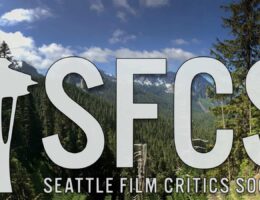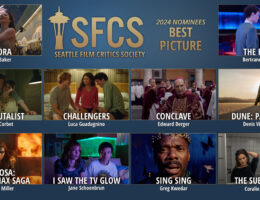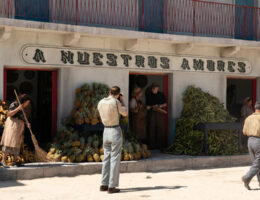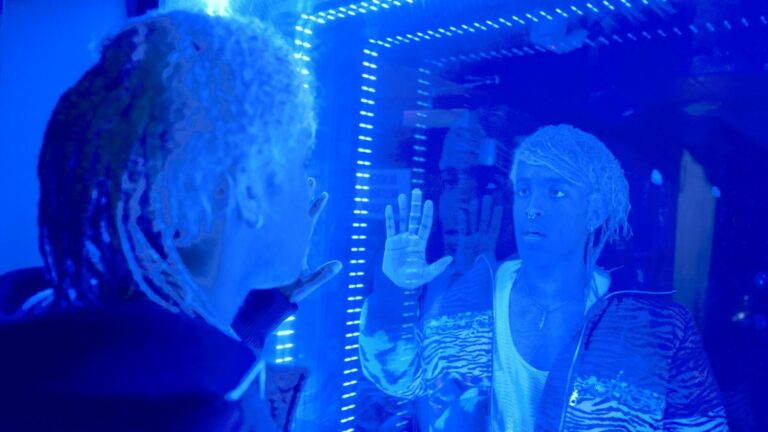The 23rd iteration of the Northwest Film Forum’s venerable Local Sightings Film Festival kicks off today, Friday, September 18, and like everything else in the COVID-19 Era, the fest has adapted to these very strange times by doing things virtually. It’ll run from September 18 – 27, on demand (except where noted below). Tickets are available at the NWFF’s website, here.
Local Sightings will be showcasing several of the kinds of special events at which the fest’s always excelled. The Opening Night presentation, Vanishing Seattle, is one with extra emotional pull regionally–a Seattle-centered short film program/project that documents “ the histories, spaces, and communities that give the city its soul.” All pay-what-you-can ticket purchases above $5.00 will be snail-mailed a Vanishing Seattle x NWFF goodie bag mailing featuring a hands-on activity; All other Local Sightings viewers are encouraged to share their experiences related to places within Seattle — both vanishing and not vanishing — that they hold near and dear to their hearts.
The one-night-only Closing Night event on September 27 (details TBD) will showcase an NWFF-curated program with contributions from the Safdie Brothers, Drew Christie, and Barry Jenkins, plus The Clouds that Touch Us from Clear Skies, a short film by the late and much- missed Lynn Shelton.
Also on the slate are Artist Spotlights for a four-part short film series by dancer/choreographer Kiana Harris; a compilation of short films by local animator Neely Goniadsky; the premiere of CONDiTIONER, the new short film by musician/filmmaker Danny Denial; and a compilation of work sponsored by local queer-centric production company, BeautyBoiz.
But the meat of Local Sightings, as always, is the roster of short and feature films made in the Pacific Northwest. And like years past, there’s a lot to dive into.
Tony: Welcome to our preview of the 23rd Local Sightings film festival, dear readers, and a warm welcome to the newest SunBreak contributor, Jenn Misko. Thanks for being on board, Jenn! Given your background in music as well as film writing, it’ll be great to have you joining us.
Jenn: Thank you so much, Tony! So happy to be here. I have done some writing for various outlets in the past (most notably PopMatters, as well as The Tripwire which has since been rolled into The Fader), but it’s been a few years since I had anything published outside of my very active Letterboxd account, as I got tied up in my many other gigs like music promotion, music venues (#SaveOurStages), very occasional PA work on local film sets, and lots of work at festivals of both the music and film varieties (one of which of course is where I first met both you and Morgen!) – anyway I’m so glad to get the chance to flex these writing/film criticism muscles again, and what a pleasure to get to kick that off by talking with you about this wonderful and essential festival supporting local filmmakers and artists!
Any trends/observations you noted among the movies, or Local Sightings in general?
Tony: I’ve covered Local Sightings for a couple of different outlets off and on for the last five years, and it’s safe to say this one will be genuinely unique.
One of the greatest things about LS is that it’s offered truly local filmmakers an early (sometimes even the first) opportunity to screen their movie in a real theater, in front of an appreciative audience. So it’s sad that COVID’s stolen away that opportunity. I’m heartened, however, that NWFF is still putting it on virtually. The idealist in me hopes that it’ll actually increase the potential audience for the movies, given the relative convenience of the online experience.
Jenn: Totally agreed. I’m usually so busy with work at this time of year that I’m lucky if I make it to NWFF for even one Local Sightings program/event each fest, while this year I know I’m not the only one who’s basically got nothing but time, and they’ve made access so easy too! With these pay-what-you-can tix, you even have the option not to pay anything at all and still dive headfirst into this cool virtual festival experience – although of course we strongly recommend supporting NWFF as much as one’s pocketbook can possibly allow, it’s also very cool to be so radically inclusive of those going through tough financial times right now. Thank you, NWFF!
Tony: This year’s iteration of Local Sightings is also resplendent with issues-oriented features, including several documentaries. The NWFF’s always been at the forefront of socio-political awareness, but their increased commitment on that front is really evident this year: Even the most ostensibly fun, escapist feature on this year’s roster is built on some very relevant social issues (more on that shortly).
Jenn: That’s true, and one thing I particularly noticed is that every single feature, with only one exception (which you can still make fit too if you squint), is either fully about or at least features themes relating to human migration, immigration, and accompanying issues of alienation or confused cultural identity, OR themes of deep connection to the land and to nature and one’s ancestral people. Which of course are two sides of the same coin. Some are even really about both.
What we saw, Narratives Division (plus Experimental):
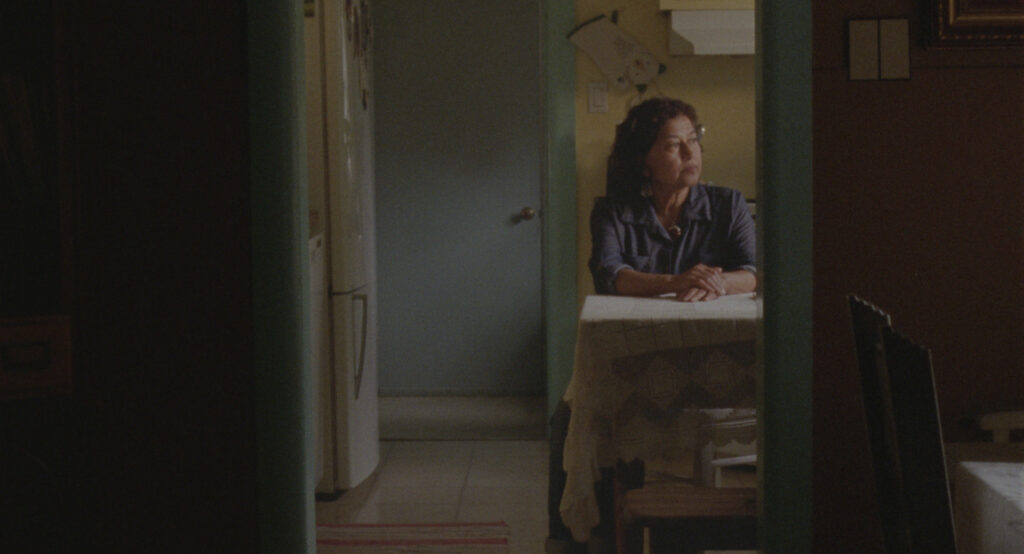
Jenn: My favorite feature by far was Borrufa. Shot on 16mm film and resplendent with that medium’s obvious imperfections as well as its warmth and sense of intimate veracity, Roland Dahwen’s mostly-Spanish-language (English-subtitled) feature about an immigrant family in Oregon dealing with the fallout from a major revelation really drew me in.
This is the kind of super slow, quiet, contemplative cinema full of very long takes where not much happens in most scenes individually, and yet by the end something seismic has shifted emotionally – like we commonly see in the work of filmmakers like Hirokazu Kore-Eda or Kelly Reichardt, or Alfonso Cuarón’s Roma. This was one of the major standouts of the fest, in my opinion.
Tony: Definitely no argument with me on this. I managed to catch it last-minute last night(!) and was likewise captivated. And yeah, Dahwen’s definitely a master at delivering emotional impact with a super-subtle hand. Leading lady Alma Garcia’s quiet expressiveness really stuck with me. In addition to the references you cited above, there’s a bit of the spirit of Kenji Mizoguchi’s The Life of Oharu in there, what with Dahwen’s use of frequent, painterly, almost static medium-distance framing and big emotions in the smallest of gestures.
I also really (no pun intended) fell pretty hard for Fall Back Down, a rom-com-thriller written and directed by Sara Beth Edwards. In it, Nick, an activist/photographer at the end of his financial rope and recently dumped by his fellow activist girlfriend, takes a job sewing garments at a Vancouver sweatshop. There he runs into travails both comic and scarily dramatic. Saying much more about the plot mechanics pretty much goes into spoiler territory.
The execution’s the key here. Edwards establishes a funky, frenetic rhythm right from the get-go, with a soundtrack full of (I thought) pretty great and varied Canadian indie rock songs. There are plenty of belly laughs, too. For the most part, Edwards has put together a movie that manages to be pretty intersectional, in an unforced way: Nick’s sister’s lesbian relationship’s treated in a refreshingly NBD fashion, and the diverse cast hits all the right notes. I especially liked Andrew Dunbar’s comic turn as Nick, and the burgeoning love/hate dynamic between him and his co-worker Reena (winningly played by Aadila Dosani) worked on me.
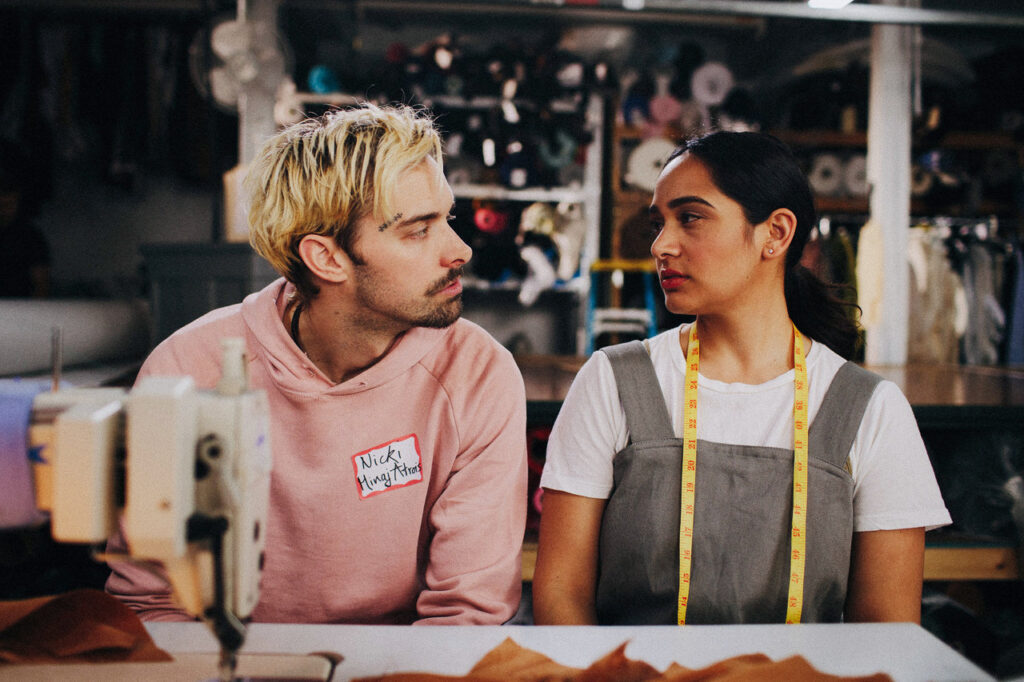
Jenn: I hate to say it, but I felt pretty differently about this, in fact about much of the stuff you specifically mentioned: I felt that a lot of the slang and language around protesting/activism felt especially forced and manufactured to me, kind of like it was spoken by people who were reading lines of dialogue in a foreign language phonetically. (There’s a Star Trek reference in there also that falls WAY flat, especially thanks to a mispronunciation.)
Tony: We might actually be pretty in-sync about one of the movie’s faults. The activist subplot and background are definitely a weak point. Had Edwards just honed in on her (very likable) cast of characters and reduced (or excised) the activism angle, it woulda been stronger. This was definitely a case of glass half-full for me, though.
The biggest sore thumb for me was the ending. While it throws some novel twists into the personal relationships in the movie, it also feels a little arbitrary (again, trying to avoid spoiler turf). That said, 99% of Fall Back Down totally stuck the landing (glass 99% full?) for me. Edwards is a talent to watch.
Jenn: I was highly anticipating this feature, described as an anarchic murder mystery/rom-com and with imagery that appealed to me, so it pains me to admit that I didn’t love this. But I still did find enough to like in this to recommend it! I also learned a clever webcam trick from this; I won’t spill the beans, so you’re just gonna have to watch the movie if you want to be able to catch me in action implementing it. Andrew Dunbar (Dragged Across Concrete) really carries the cast, all while lookin’ like a Soundcloud rapper. I do agree with your issue about the ending, big time.
There’s a live Q&A with Edwards as well as Danny Denial (supporting that premiere of CONDiTiONER you mentioned), on Wednesday 9/23 at 7pm via Zoom: I bet if I attend that I’ll end up liking the whole thing better; that’s usually how it goes with me.
Tony: małni – towards the Ocean, towards the shore is described as an experimental feature in NWFF’s promo materials, but don’t let that blanket description turn you off. Writer/director Sky Hopinka’s feature debut is a visually lush, mesmerizing part-documentary, part tone poem that touches on nothing less than the nature of birth, death, and rebirth, filtered through dual narrative threads. Sweetwater Sahme and Jordan Mercier–both are two (unrelated) expectant parents contemplating the challenges of their children’s births..
Hopinka ties both future parents’ hopes, doubts, and quests for meaning with Indigenous mythology about the origins of death, and the movie’s rife with nature symbolism. I love the way Hopinka incorporates a lot of narration in the PNW-regional Chinuk Wawa language: It’s subtitled in English, and the deep, rhythmic nature of it’s entrancing even if you don’t understand it.
Speaking of entrancing, this movie is easily the most richly sensory experience of the Local Sightings 2020 I’ve viewed: Hopinka’s cinematography–full of fluid tracking shots through forests and evocative water/nature imagery– the sound mix by Drew Durepos , and Thad Kellstadt’s ethereal score all coalesce into one seriously immersive experience. This flat-out knocked my socks off just watching it on my laptop: Here’s hoping it screens at a real movie theater the instant we’re able to enjoy such luxuries again.
Jenn: Interesting – I wasn’t even thinking of this one as a narrative feature; thought it was a straight-up doc, just a particularly peaceful and dreamy one.
Tony: There’s enough abstraction, and a mythological aspect that, for me, blurred the line a bit.
Jenn: Whatever it is, I agree that it’s lovely; a worthy recipient of the “Indigenous Showcase” tag and beyond. I really liked the use of Chinuk Wawa as well (a pidgin language which was coincidentally also brought to my attention another time this week when I watched Kelly Reichardt’s First Cow!) – thought it was especially cool that in fact when people speak in English it’s then subtitled with the Indigenous language! I don’t know if I’ve ever seen a partially-non-English/subtitled film do that kind of thing, making the entire text equally intelligible in both languages.
Speaking of docs that border on straight-up experimental filmmaking, Home in the Woods is a true exemplar of slow cinema: this is 96 minutes of staring at trees, spiders, bees, microscopic life, ice…there are some shots with the hands of a gardener or beekeeper in the frame, but no human faces or dialogue, all nature, filmed over two years in the wilds of Marion County, OR. And it’s all either in black & white or run through some experimental color-processing filters.
I suspect this would be best enjoyed under the influence of one’s substance of choice, rather than on 3 hours of sleep. I’ll admit this was a powerful enough cinematic lullaby that I had to pause halfway through to take a nap (I did pick it up again later), although it’s also possible that I was just really tired and that’s not the movie’s fault. The credits, where names usually go, were like “Water, Trees, Centipedes, Sunlight, Bones, Ice.” Nice.
What we saw, Docs Division:
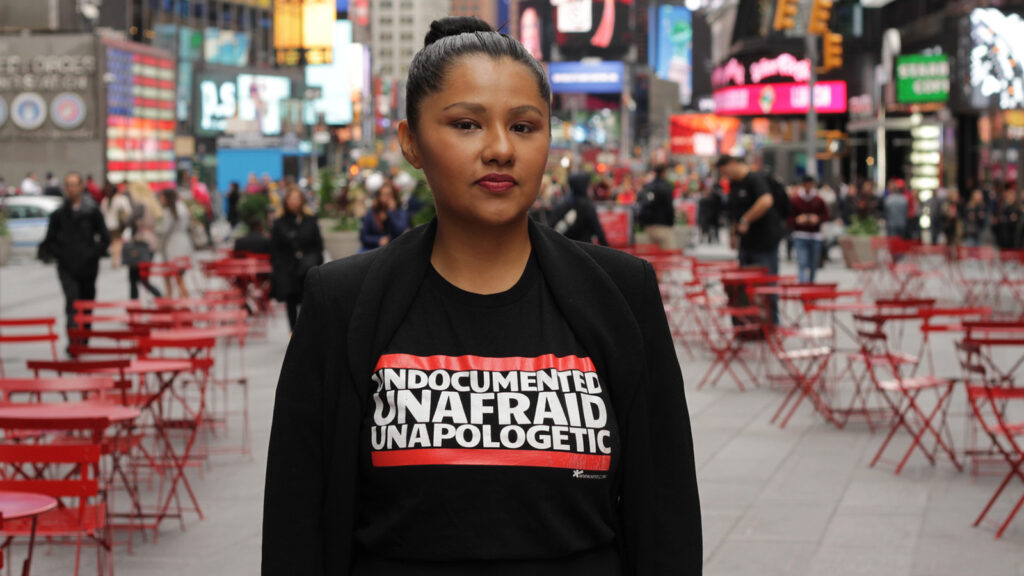
Jenn: I got a lot out of From Here: a really thoughtful doc about the immigrant experience of being an outsider in one’s home country, told via the specific stories of four first- or second- generation immigrants from very different circumstances in NYC and Berlin. It’s moving to see how much these very different experiences intersect, and illuminating about some of the specifics that come from each of their cases. With music by Seattle’s own Alex Guy (Led to Sea)!
Spawning Grounds is a 54-minute doc about preservation efforts of Kokanee salmon, a rare native species indigenous to the Lake Sammamish area. It gets pretty granular with real specific info about salmon, as well as going a bit wider about the local Snoqualmie Tribe’s deep connection to these fish as well as their waterways and surrounding lands. Perfect for the conservation nerd that hopefully lives in all of us. Snoqualmie Falls is my favorite place in the world, so I was more than happy to see it show up in this film.
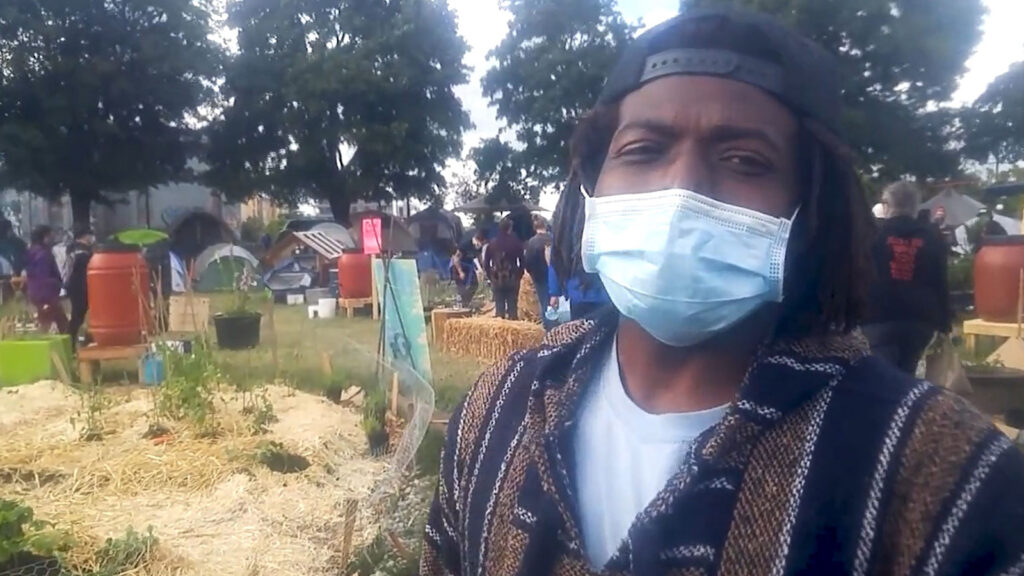
Tony: Tajuan Labee’s 24 Hours in the CHOP is exactly as advertised–a straightforward chronicle of one full day in Capitol Hill’s Occupied Protest zone. It’s naturally powerful stuff, equipped with a lot of immediacy. I especially appreciated Labee’s interviewing skills: There’s a particularly interesting conversation with a black man exercising his right to open-carry that really helps bring this country’s intense double-standard regarding gun possession into sharp focus.
Jenn: As a document of what the CHOP looked and felt like – a permanent record – it’s valuable, but as filmmaking I found this one quite amateurish, very basic and raw. I did also appreciate how LaBee does manage to grab interviews with many of the major players of that scene as well as many others passing through, and it does round out into a pretty good portrait of the diversity of people, ideas, tactics, and attitudes that crashed into each other in that short-lived chapter of Seattle’s very recent history.
Another cool thing is that that film, which only runs 60 minutes, will come attached in a single viewing package to a 14-minute short called Hope Is Not Cancelled, about the murals and street art going up in COVID times around Seattle and the artists who create them. I got a lot out of that one; the murals are really beautiful, and the artists had some really thoughtful stuff to say as well. Full of encouraging messaging to help buoy us in these discouraging times.
Tony: Another Word for Learning follows Aisha O’ Sullivan, an indigenous tween living in Vancouver BC and attempting to find a method of education that allows her to fulfil her creative impulses even as she fights to maintain a firm hold on her culture. Stateside viewers might lose a little bit in translation (admittedly, I’m pretty much ignorant of the nuances of Canada’s policies and politics around indigenous peoples), but sadly, the issues that Aisha and her activist mom Gunargie face feel pretty universal. Filmmaker Jadas M. Dumas does a good job of keeping the focus tightly on Aisha and Gunargie, and they’re riveting protagonists.
Jenn: I too liked this story of Aisha finding her own path through what often feels like a hostile educational system, as well as beginning to take her mother’s lead to get in touch with their cultural roots. We dive a bit into their family history – which exemplifies some of the many traumas that have been inflicted upon First Nations peoples, including Aisha’s mother’s forced relocation to a Canadian Indian residential school. This is something referenced a lot but spoken about more in terms of its effect on Gunargie than the basic facts of that situation.
I’d recommend that anyone unfamiliar with that chapter in history read up on it when you’re ready to get fired up about injustice – it’s horrific stuff (certainly not any more horrific than what’s happened to Indigenous peoples in the United States, but that part is a specifically Canadian chapter.) This is a warm and specific family portrait as well as a window into an understanding of these much wider issues.
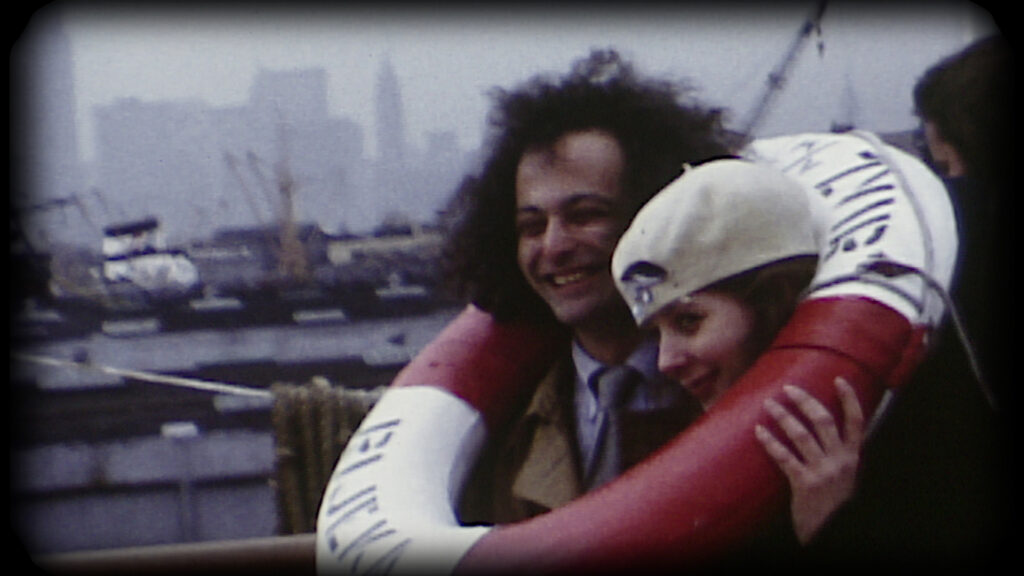
This 72-minute doc also gets a short paired with it as a little package: Dzunuḵ̓wa is a 6-minute stop-motion-animated short depicting an Indigenous elder telling a cultural legend. A very quick watch for some cool work, which was educational to me (I’d never heard of this legend before).
Tony: My two favorite docs were all the richer thanks to the characters at their respective centers. Seattle filmmaker Thérèse Heliczer’s The Invisible Father revolves around her father Piero, a gifted poet, filmmaker, and artist who turned out to be a key figure in the evolution of Andy Warhol’s Factory. Piero ran with Allen Ginsberg, pioneering experimental filmmaking scenester Jonas Mekas, and Warhol’s entire entourage, including the Velvet Underground (Velvets band member John Cale even weighs in with some memories).
But the elder Heliczer’s uncompromising hippie idealism and mental illness took a toll on his loved ones. And the dramatic meat of the doc hinges on Thérèse’s attempts to get to know and understand her largely-absent late father. The resulting film’s a fascinating combination of detective work, soul-searching, and emotional evolution.
Jenn: I was a big fan of this one, too. It doesn’t go as philosophically wide or get as plot-twisty as Sarah Polley’s 2012 doc Stories We Tell, but it reminded me a bit of that film, in its focus on personally reconciling complicated feelings about a parental relationship with the objectively interesting and complicated facts of who that parent was as a whole person. Edited by hometown hero John Jeffcoat (director of Outsourced and Big In Japan)!
Tony: My one quibble with The Invisible Father comes from its length. There’s a rich and fascinating story here, but at just under an hour, it feels a bit condensed. Then again, there’s a strong sense of a lot of material being lost to time (negatives of many of Piero’s films just disappeared, and the fleeting footage of him filming The Velvet Underground is silent). And if Piero Heliczer proves to be almost as much of an enigma at the end as he is at the movie’s opening, there’s considerable emotional pull in his daughter’s reconciling his emotional and physical absence with the explosive creativity she and her siblings have inherited from him.
Jenn: One thing to note regarding the length is that this (agreed, quite short) feature will also come paired in a package with a 9-minute short called Taky Kimura – The Heart of the Dragon. This is yet another portrait of an interesting father, this one a close associate of Bruce Lee. Together they make for a really fascinating set of films about complicated dads.
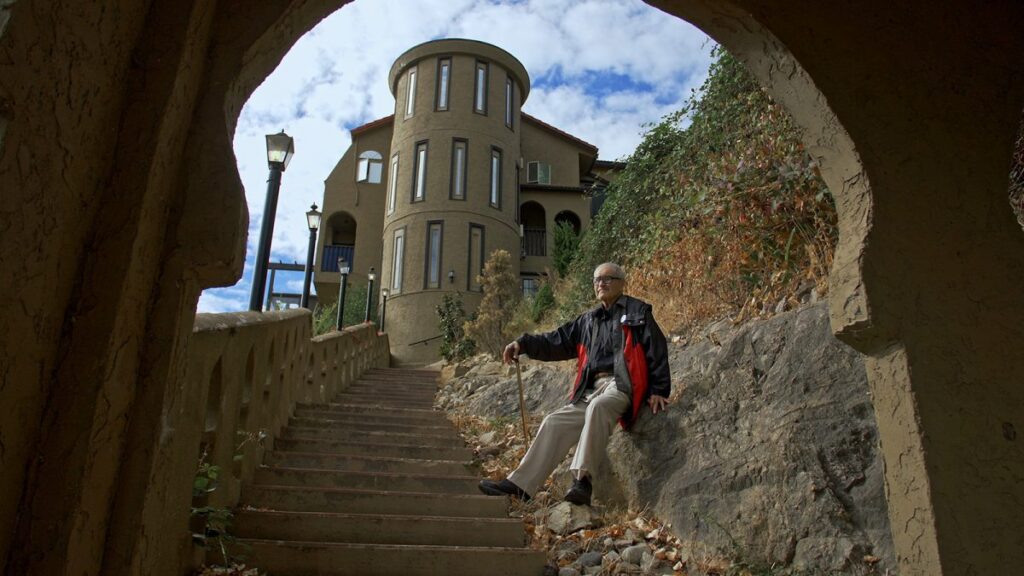
Tony: The crown jewel of the docs I saw, though, was Eddy’s Kingdom, Greg Crompton’s bang-up biography of Eddy Haymour, a Lebanese immigrant and self-made business mini-mogul. Haymour’s quest to build an island theme park in Kelowna BC leads to legal battles and a chain of events so bizarre you’d laugh it off as overheated melodrama if it weren’t all real.
This story may well be common cultural lore in the Great White North, but it’s new to me, and if Haymour’s saga is new to anyone reading this, it’s best not to research any further, and to go in cold. Crompton constructs the whole thing with the momentum of the most involving fictional feature, and the now-elderly Haymour is a documentarian’s dream–disarmingly charming, charismatic, and unsettlingly obsessive at equal turns.
Jenn: Yeah, this one is really great (its story was new to me as well!); an affectionate look at a truly one-of-a-kind personality. Eddy Haymour got totally hung up on one whimsical idea, and ended up dedicating his life to combating the perceived injustice regarding it, to the detriment of any other satisfaction in life or successful family relationships, and along the way earned the title of “Canada’s first terrorist.” Wild. Also, this film combines archival images and footage with reenactment footage in an interesting visual-montage way I hadn’t quite seen before. “If you could draw the line for me between sanity and insanity I could tell you what side of that line I’m on. No one can draw the line.”
Tony: It’s definitely the strongest piece of cinematic storytelling of the entries I saw–fiction or non.
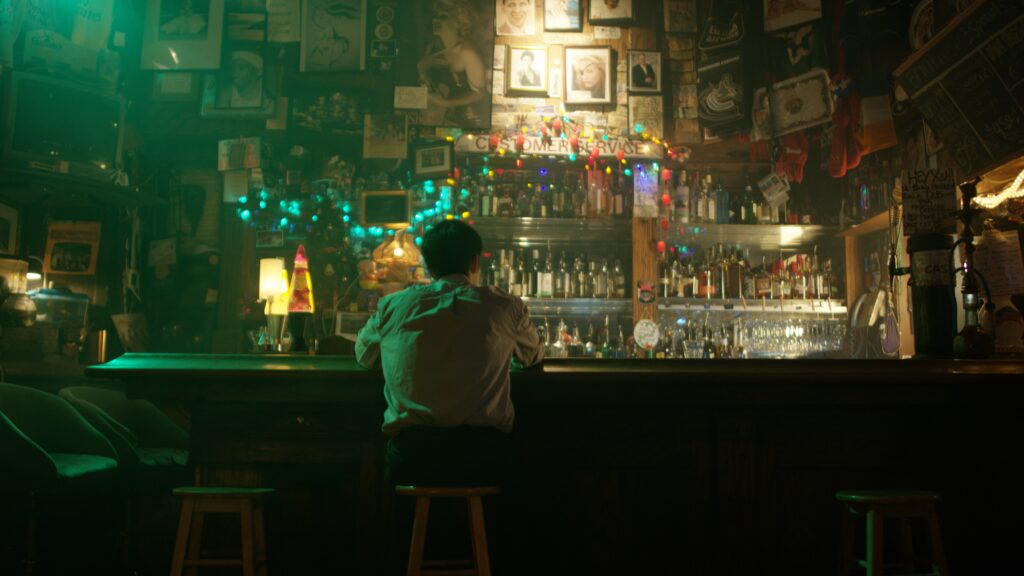
I loved those last two films you mentioned, but I actually think my favorite doc of the fest was The World Is Bright. It’s a knotty “docu-thriller” about the Chinese parents of a son who has allegedly died by suicide in Vancouver; full of exciting twists, deep pathos, and plenty of opportunities to rail at government bureaucracy and incompetent law enforcement. It also explores cultural issues surrounding mental illness, as well as the advantages and pitfalls of migration to try and pursue a better life. Director Ying Wang actually features more characters (after Eddy above) who insist upon satisfaction regarding a wrong they feel was committed against them by the Canadian government, to a totally unreasonable degree, again giving up so much else that could be dear in life in pursuit of this single-minded goal. Two films of that in this fest!!
There’s a live Q&A with director Ying Wang, producer/cinematographer Jian Ping Su, and editor/co-writer Lawrence Le Lam, happening on Zoom straight after a viewing party of this film on Thursday the 24th – I bet that’ll be a worthwhile event to tune into!
Tony: I haven’t caught The World is Bright yet, but you’ve definitely piqued my interest. It sounds phenomenal.
Any closing thoughts?
Jenn: I spent the week or so of access I had pre-fest focusing on the features, and I’m proud to report that I did manage to watch every one of the 11 features in the program (and found something to appreciate in each one of them!), as well as the 3 shorts that accompanied that handful of them. I haven’t dug into anything at all of the shorts packages, though, which is certainly something I’d have liked to do with more time.
Tony: Hats off to you getting through all of them! And I agree re: the shorts. I’m woefully short on my shorts viewing (cue rim shot).
Jenn: Luckily I still have the whole length of the festival, and in fact many of those shorts packages have live-streaming watch party dates as well as live virtual Q&As – I’ll bet they’ll be even more fun with a (virtual) crowd and the opportunity to interact with the filmmakers, anyway! I’m particularly super-looking forward to the shorts programs entitled After Dark: Something Strange (midnighters are totally my jam – that one’s got a viewing party followed by a Q&A on Saturday the 19th), and FEM-POW! (lady-centric content: viewing party followed by Q&A on Monday the 21st) – but I think really it’d be hard to go wrong with just about any of these. I’m so psyched I get to be so tuned in to the hyper-local filmmaking community this fall.
Tony: COVID-imposed technical necessities aside, it’s fair to say that the Film Forum’s delivered another choice trove of regional cinema treasures. Dig deep, film junkies.
